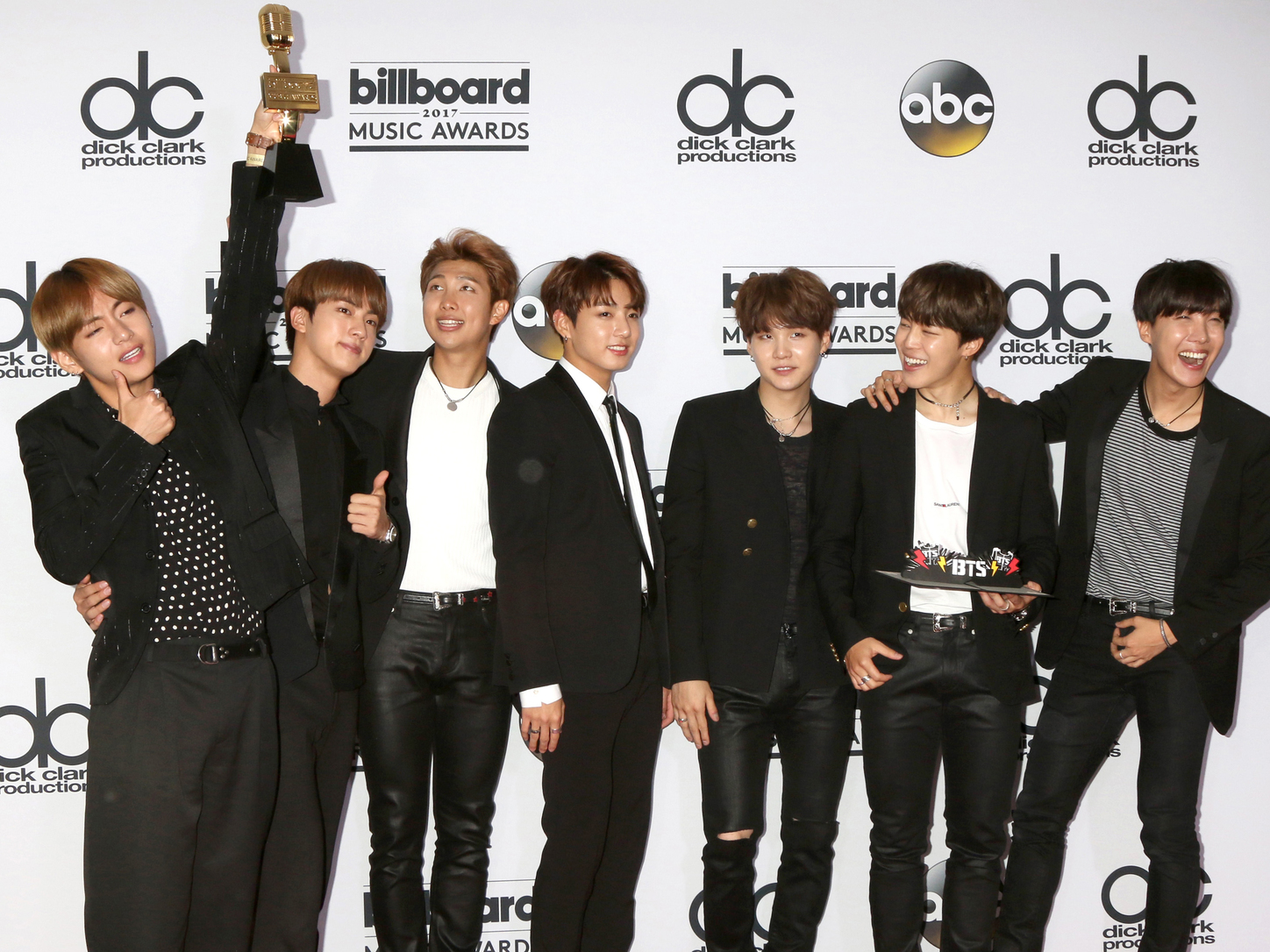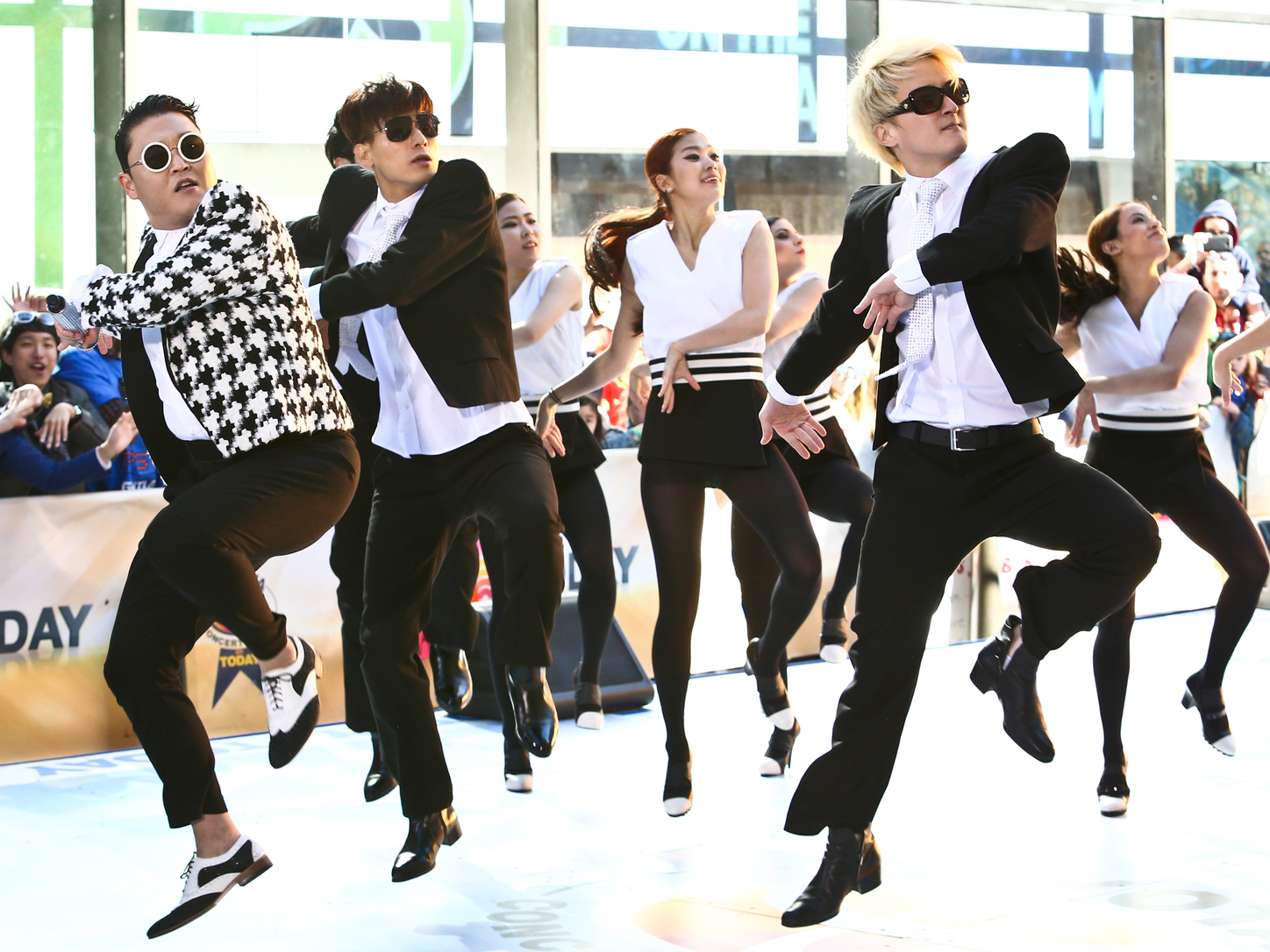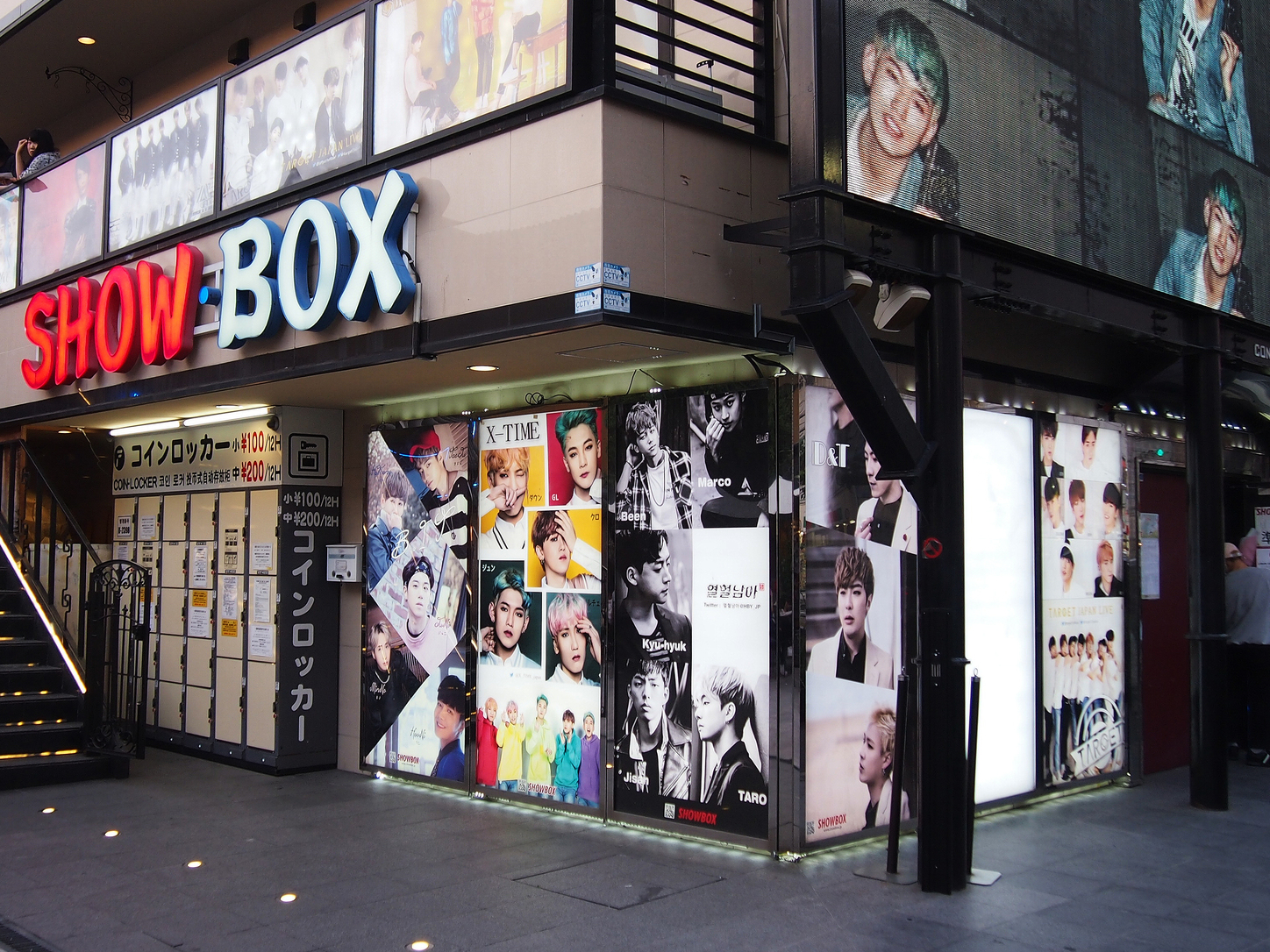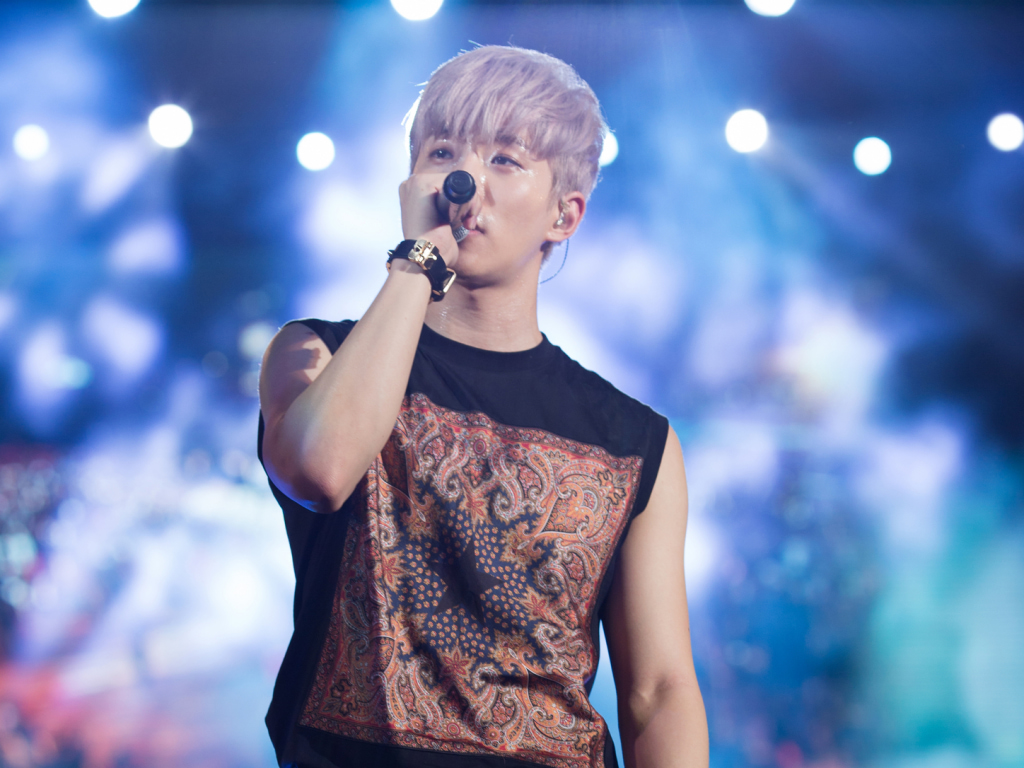May 2017 was a good month for K-pop fans. Five years after “Gangnam Style” mania, PSY released his latest album, PSY 8th 4X2=8. In Tokyo, the world’s largest Korean culture festival, KCON, was held over three days at Makuhari Messe, attracting more than 30,000 visitors. And seven-member boyband BTS won the Billboard Music Award for Top Social Artist, defeating Justin Bieber and Selena Gomez in an impressive landslide voting victory – and leaving mainstream American media awash with confusion at exactly who BTS is, and how, as CNN Entertainment put it, they are “Bigger than Bieber?”

BTS with their Billboard Music Award
The unmitigated scale of K-pop’s popularity is becoming impossible to deny, as fans’ enthusiasm co-opts Google search results and hashtags for everything from awards shows to the recent South Korean presidential election. The artists might not yet be established as household names, but people everywhere are finally noticing that there’s more to K-pop than “that guy doing the horse riding dance.” So how did the genre rise through Asia and beyond?

“Gangnam Style” star PSY (far left) performing on the Today Show in New York
First Stop, Japan
Hallyu, or The Korean Wave, first washed over Japan’s shores in the early 2000s as romantic Korean TV dramas captivated housewives with their sentimental stories and handsome stars. Soundtracks packed with heartfelt, tender ballads served as the perfect bait to hook a fanbase for the singers and numerous idol groups, which had become a bubbling trend in South Korea. TVXQ (a.k.a. Tohoshinki) and BIGBANG were some of the first to succeed in the overseas market with original Japanese songs and charming TV appearances. As Japan’s interest in K-pop began to increase, Super Junior, Girl’s Generation, KARA and dozens more groups followed suit. By 2011 K-pop had swept across the nation, topping the charts and selling out arenas.
Korean idol groups were exotic and exciting, strikingly different from the cute and wholesome J-pop idols that had remained relatively unchanged (both visually and musically) since the 1980s. The public was captivated by impeccable dance routines, fresh fashions, long legs and sex appeal. The music also brought something new to the charts: impressive vocalists and charismatic rappers on top of progressive production which introduced contemporary Western influences, mixing elements of EDM, dubstep and R&B. K-pop steadily saturated the airwaves, shops and streets, earning its own section in record stores and perpetuating a thriving industry of unofficial goods and K-culture tourism in Shin-Okubo’s Korean neighborhood.
Though many underestimated its staying power, and political tension between Japan and Korea yielded occasional protests, new groups and performers promote relentlessly, continuing to compete for fans’ affections. It seems that nothing can stop the enduring Hallyu obsession: last month, bigger-than-Bieber boyband BTS topped the Oricon singles chart with the Japanese version of their song “Blood, Sweat & Tears.” The original Korean version had been the group’s biggest hit to date, with over one million domestic sales, later appearing on what became South Korea’s best-selling album of 2016: Wings (re-released as You Never Walk Alone).
Next, the World
The same album reached number 26 on the American Billboard 200, the highest-ranking position of any K-pop artist to date. Overseas popularity snowballed, and the past few years have seen numerous groups including BTS, BIGBANG and EXO embarking on world tours.
Before BTS’s overseas success, however, most people outside of Asia had been oblivious to the rising K-pop boom until PSY’s “Gangnam Style” took the internet by storm in 2012. The viral hit remains the most watched video on YouTube, nearing three billion views to date. A middle-aged man’s novelty party song is an unlikely representation of the K-pop realm, but it showed fellow Korean artists the power of YouTube, vivid music videos, slick production and catchy songs.
These days, Korean entertainment companies, such as YG Entertainment, have the resources to work with handpicked international songwriters, producers and visual creatives. These powerhouse teams combined with group members’ painstakingly maintained good looks and years of intense (and allegedly sometimes unreasonably strict) dance and vocal training are producing some of the most musically interesting and aesthetically inventive movements in modern pop.
BIGBANG’s leader – rapper, singer-songwriter and producer G-Dragon – has long held Korea’s fashion icon crown. In fact, his unique personal style found him appearing in the Western press long before anyone overseas had even heard his music. He makes regular appearances at Fashion Weeks, is on first-name basis with Karl Lagerfeld, and launched his own fashion brand, Peaceminusone, last year. In terms of his music, G-Dragon is adept at spanning genres and blending inspirations to create new trends, and his work as part of YG Entertainment’s production team has become synonymous with the agency’s recognizable trademark sound: classic old skool hip hop beats reinvented and injected with dance music breaks and swooping melodic hooks.
And Back Home Again…
K-pop’s overseas expansion is, in turn, feeding back into the domestic market where masses of wannabe stars now have their eyes fixed on a global stage. The sheer number of K-pop groups has led to increasingly fragmented sub-sections appearing on the musical landscape, and a blurring of genres and boundaries. Indie musicians and underground rappers are regularly absorbed into and usurped by major companies. Some “manufactured” idols play their own instruments and write their own songs, yet it’s rare for independent rock bands to survive when it comes to chart rankings or TV exposure.
Hyukoh, a four-piece indie band, seems to be an exception. The band’s anthemic pop songs feature jangling guitars over driving basslines, mixing influences from Britpop, American rock, folk, Korean and Chinese music, led by trilingual frontman Oh Hyuk’s distinct and powerful vocals. Within South Korea, Hyukoh’s widespread appeal seems to transcend predisposed musical tastes, which could simply be a testament to their music or perhaps a precursor to a shifting appetite towards more analog-based guitar bands.
Where there was once a clear divide between Korean hip hop (with its roots in the underground rap scene and B-boy culture) and the less respected “hip-hop style” idol groups (where rappers were often criticized for lack of talent and inauthenticity), the two sides seem close to converging. Show Me The Money, a reality TV show where aspiring rappers compete under the guidance of famous rappers, seems to bridge the gap between the underground and mainstream: the contest’s third season was won by Bobby, a trainee at YG Entertainment, who earned the respect of the audience and judges despite simultaneously preparing to debut in an idol group (IKON).
Big names like G-Dragon, Jay Park and Zico could all be described as crossover artists. Zico is a successful songwriter as well as the leader and main rapper of mainstream idol group Block B. He also maintains an active presence in the Korean hip hop scene, frequently collaborating with solo singers like Crush and Dean, who ironically both receive idol-like levels of fame and adoration from fans. It’s difficult to define what exactly constitutes an idol these days and where the defining factors of the K-pop label begin and end. To overseas listeners, in particular, diverse genres have become assimilated under the same bracket.
Even if you can settle on a definition of K-pop, when it comes to idols it would be a mistake to judge them on audio output alone – after all, this is an industry that has been designed to be both seen and heard.

Where to Get a Dose of K-Pop
Two upcoming gigs and a top meet-and-greet spot:
Hyukoh
Summer Sonic Festival, August 19, 2017, Makuhari Messe. Click here for more information.
G-Dragon
ACT III, M.O.T.T.E World Tour, September 19-20, 2017, Tokyo Dome
Showbox
To experience live K-pop in a more intimate setting, this is the place to go. The venue hosts events, fan meetings and concerts by new or lesser-known groups in addition to a revolving regular schedule of Japan-based K-idols. Fans (and performers) can often be spotted loitering outside, and if you find yourself joining them you might even be charmed into paying extra for meet-and-greet privileges (think Polaroid pictures and hugs). 1-17-8 Okubo Shinjuku-ku, www.showbox.jp
Updated On April 26, 2021









